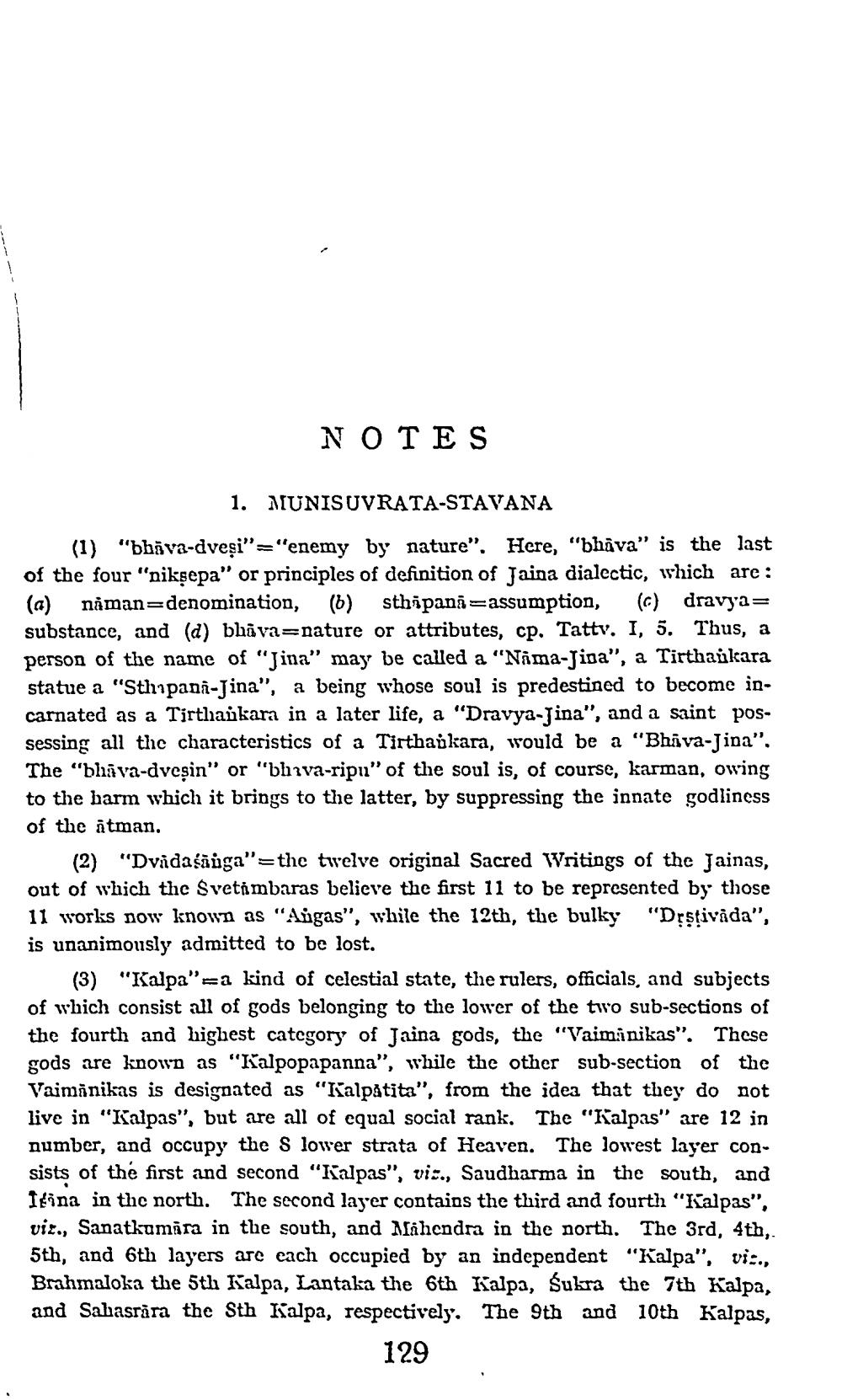________________
NOTES
1. MUNISUVRATA-STAVANA (1) "bhava-dveși"="enemy by nature". Here, "bhāva” is the last of the four "niksepa" or principles of definition of Jaina dialectic, which are : (a) niman=denomination, (b) sthipanā=assumption, (c) dravya= substance, and (d) bhāva=nature or attributes, cp. Tattv. I, 5. Thus, a person of the name of "Jina" may be called a "Nama-jina", a Tirthaikara statue a "Sthipani-Jina", a being whose soul is predestined to become incarnated as a Tirthaukara in a later life, a "Dravya-Jina", and a saint possessing all the characteristics of a Tirthaikara, would be a "Bhiva-Jina". The "bhava-dvesin" or "bhiva-ripu" of the soul is, of course, karman, owing to the barm which it brings to the latter, by suppressing the innate godliness of the atman.
(2) "Dvidaçãåga"=the twelve original Sacred Writings of the Jainas, out of which the Svetimbaras believe the first 11 to be represented by those 11 works now known as "Aigas”, while the 12th, the bulky "Dşstivada", is unanimously admitted to be lost.
(3) "Kalpa"-a kind of celestial state, the rulers, officials, and subjects of which consist all of gods belonging to the lower of the two sub-sections of the fourth and highest category of Jaina gods, the "Vaiminikas". These gods are known as "Kalpopapanna", while the other sub-section of the Vaimānikas is designated as "Kalpåtita", from the idea that they do not live in "Kalpas", but are all of equal social rank. The "Kalpas" are 12 in number, and occupy the S lower strata of Heaven. The lowest layer con. sists of the first and second "Ralpas", viz., Saudharma in the south, and Itina in the north. The second layer contains the third and fourth “Kalpas", vir., Sanatkumira in the south, and Mahendra in the north. The 3rd, 4th,. 5th, and 6th layers are cach occupied by an independent "Kalpa", viz., Brahmaloka the 5th Kalpa, Lantaka the 6th Kalpa, Subra the 7th Kalpa, and Sabasråra the Sth Kalpa, respectively. The 9th and 10th Kalpas,
129




